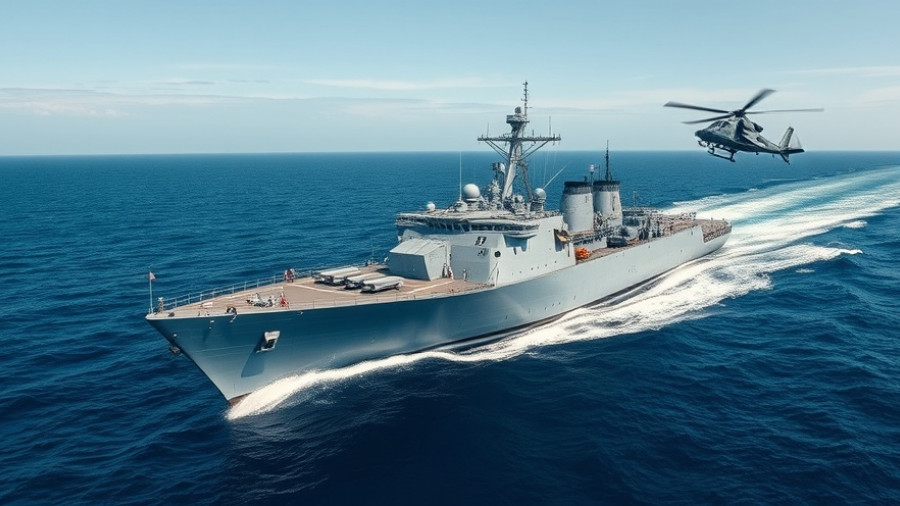
The Indian Navy's Strategic Procurement Moves
The latest advancements in military procurement by the Indian Navy are gaining attention as they embark on acquiring critical new assets, including Landing Platform Docks (LPDs) and advanced lightweight torpedoes. This procurement initiative is significant, not only for enhancing maritime capabilities but also for ensuring India's readiness to address modern naval combat needs.
Understanding the Role of Landing Platform Docks (LPDs)
The procurement of four large LPDs, announced by the Defence Acquisition Council (DAC), underscores a strategic shift toward enhancing India’s amphibious warfare capabilities. Each LPD is designed to support joint operations involving the Army and the Air Force, making it a crucial asset for comprehensive military operations, especially in peacekeeping and humanitarian relief missions. The implications of such vessels are profound, offering the Indian Navy greater versatility in a variety of legal and operational environments.
Enhancing Maritime Defense with Lightweight Torpedoes
Additionally, the introduction of advanced lightweight torpedoes aims to bolster the navy's anti-submarine warfare abilities. Developed by the Naval Science & Technological Laboratory of DRDO, these torpedoes can target various submarines, thereby increasing the Indian Navy's offensive capability. This is particularly relevant given the geopolitical tensions in the region, where submarine threats have become more pronounced.
The Financial Commitment Behind Modernization
The Indian Ministry of Defence (MoD) cleared an impressive procurement budget of approximately Rs 79,000 crore (around $9 billion) for various branches of the armed forces, with substantial allocations for the Indian Navy. This financial commitment signals India's dedication to strengthening its defense capabilities and adapting to emerging threats on national and international levels.
Impacts on National Security and Strategic Posturing
The LPDs and torpedoes are not just investments in military technology; they represent a strategic posturing that seeks to deter adversaries and enhance India’s influence in the region. The procurement process is aligned with India's broader defense strategy, which aims to ensure a robust response to potential conflicts or humanitarian crises.
Future Predictions for Naval Warfare
As the Indian Navy modernizes its fleet, it is essential to consider the evolving nature of naval warfare. Future conflict scenarios are likely to emphasize speed, precision, and technological prowess. The inclusion of smart ammunition, advanced gun systems, and improved communication technologies will be critical in maintaining superiority.
The Human Element: Crew Training and Readiness
While technology plays a vital role in defense, the effectiveness of new systems largely depends on the training and readiness of the crew operating these platforms. Investment in personnel training will be imperative to ensure that the navy can fully leverage the capabilities introduced through these procurements.
Conclusion: A Commitment to Maritime Excellence
The procurement of LPDs, torpedoes, and advanced gun systems reflects a commitment by the Indian Navy to remain competitive and responsive to the complexities of modern warfare. This modernization will help secure national interests and project power in strategic waters.
The Indian Navy’s ongoing evolution, supported by significant government investment in procurement, positions it to navigate the challenges of the future effectively. By enhancing its capabilities, India not only ensures its national security but also strengthens its role on the global stage.
 Add Row
Add Row  Add
Add 




Write A Comment